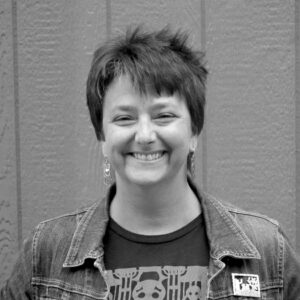San Antonio, Texas
At various times this school year, students from the brand-new Advanced Learning Academy in San Antonio, Texas, will walk across the athletic fields and a sleepy frontage road to watch the San Pedro Creek trickle into a concrete tunnel.
That creek will be a subject of study throughout the year across all academic disciplines: science, history, geography, literature, even art.
It doesn’t look much like a historic waterway anymore, but the creek isn’t just another concrete ditch. And the academy isn’t just another school; it’s a novel effort to change beliefs in a district where entrenched poverty has long been seen as a barrier to learning.
The academy’s innovative program has two facets that the school’s founders hope will combine to combat some deep-seated problems in a district chronically short on money and teachers.
First, teachers will use strategies normally reserved for gifted and talented students to raise expectations and achievement for all children, intellectually advanced or not.
Second, the school will be an incubator for adult talent. It will provide yearlong residencies to aspiring teachers and principals, who then commit to staying in the district for three years.
‘We have to believe in our students’
Unlike most schools that offer such programming, Advanced Learning Academy may or may not have students who are “gifted,” according to the traditional definition. Its 550 kids, in kindergarten through 10th grade, were admitted on a first-come, first-served basis from more than 1,000 applications submitted.
Its instructional methods, though, are based on a strategy found in most gifted-learner programs: Students will be encouraged to examine ideas using multiple lenses. The process of comparing what they learn about the same topic — the San Pedro Creek, for example — in multiple subjects will require them to draw inferences, analyze and ask sophisticated questions.
Instruction will involve lots of student choices and personalized learning plans. Students will work collaboratively and on projects, frequently out in the community. Teachers will borrow the most successful elements of schools such as California’s High Tech High and the Big Picture Learning network of schools, which have succeeded in driving student achievement using a combination of individual learning plans and technology.
Evidence shows that the simple act of raising the bar in terms of aspirations can have a profound effect on student achievement. High schools that expose all students, conventionally gifted or not, to rigorous curricula, such as International Baccalaureate programming, see better academic performance among students who typically struggle.
What’s different about the academy is the expectation that all students are capable of mastering material once reserved for students whose IQs or achievements were categorized as exceptional. This is a sharp contrast to the conventional wisdom that children in poverty are already overstressed and that pushing them to reach higher standards would only discourage them.
“Our problem of practice is a lack of high expectations,” says Lisa Riggs, the district’s assistant superintendent for academics. “We have to believe in our students.”
Teaching the teachers
The San Antonio Independent School District has a median family income of just $30,000 a year and is home to two of the poorest ZIP codes in the nation. Of its 53,000 students, 93 percent qualify for free or reduced-price school lunch; 91 percent are Latino and 6 percent African-American. Situated in a county with 17 competing districts, most of them wealthier, San Antonio ISD struggles to recruit and retain teachers.
The brainchild of District Superintendent Pedro Martinez and his leadership team, Advanced Learning Academy combines two national trends: “grow your own” teacher training programs and teacher residencies that in some schools of education have replaced the traditional few weeks of student teaching.
“The school’s role is to be a model of best practices,” says the academy’s founding principal, Kathy Bieser. “We’re really trying to make this a center for adult learning. We need to really tend to adult learning for students to be successful.”
Martinez recruited Bieser from the International School of the Americas in San Antonio’s North East Independent School District, a high school with strong ties to nearby Trinity University, which has a nationally recognized school of education. When the academy’s doors opened Aug. 22, there were 40 experienced teachers, 10 teacher candidates from Trinity — and clear expectations about how the new teachers will be trained.
The academy’s student teachers started in Trinity’s master’s program over the summer. They will spend the next two terms teaching alongside veterans at the academy and continuing their coursework. In exchange for financial support from the district and from City Education Partners, a civic effort to increase quality in San Antonio’s schools, they must commit to teaching in the district for at least three years.
San Antonio ISD will open a second teacher-residency school in the fall of 2017 in partnership with the Relay Graduate School of Education, a stand-alone teacher training program with more than a dozen campuses around the country.
Training for the future
As in most districts, many adults in the San Antonio ISD see the challenges confronted by children living in poverty as barriers to student achievement; every strategy that pushes students to break through helps to close the adult belief gap. When Advanced Learning Academy’s newly minted principals and teachers move into other schools, its founders believe, they’ll take along their high expectations and their faith that all students can succeed.
Ideally, the new teachers will be placed in schools in small groups so they can support one another in continuing to polish the strategies they acquired at the academy. This could provide critical mass for changing the prevailing beliefs at their new schools.
“For years, inner-city schools haven’t been able to attract and retain talent,” says Martinez. “The fact that we’ll be able to build our own pipeline of master teachers who are able to differentiate” — to simultaneously serve students of varying abilities — “is huge.”
A place in history
The ugly concrete culvert built along the San Pedro Creek for flood control bears little resemblance to Yanaguana, a spring that burbled forth from a limestone outcropping at the site when Spanish conquistadors arrived in 1691.
“We marched five leagues over a fine country with broad plains—the most beautiful in New Spain,” wrote the colonial province’s first governor, Domingo Teran de los Rios. “We camped on the banks of an arroyo, adorned by a great number of trees, cedars, willows, cypresses, osiers, oaks and many other kinds. This I called San Antonio de Padua, because we had reached it on his day. Here we found certain rancherias in which the Peyeye nation live.”
The creek still feeds into the waterway that colonists named the San Antonio River, which runs more than 200 miles to the southeast, briefly joining the Guadalupe River before emptying into the Gulf of Mexico. In more modern chapters of San Antonio’s history, the creek marked a cultural divide between Anglo-Americans, who settled to the east, and Tejano and Mexican residents to the west.
As students visit the creek, understand how it shaped their community and absorb the area’s history, they will also be searching for a permanent name for their new school, which is located on the campus where San Antonio’s first high school once stood. The exercise, which might go on for the entire academic year, will help them define their place in their community’s history as the next chapter unfolds.
Already, that future is starting to take shape. Last week, city leaders kicked off a $175 million redevelopment planned for the banks of the San Pedro Creek, in a ceremony held on the academy’s football field. Officials hope the project will revitalize the historic waterway in the same way the recent extension of San Antonio’s beloved Riverwalk created thriving neighborhoods and commercial districts branching out from downtown.
San Antonio ISD has a formal place at the table. After students and teachers find a name that grounds the school in the area’s culture, history and ecosystem, they might get to play a role in imagining the parks and public art that will line the banks of the San Pedro Creek — a project slated to be unveiled in time for the city’s 2018 tricentennial.
“There was a little disbelief that San Antonio ISD would develop a school in the heart of downtown that would be exciting,” says Riggs, the assistant superintendent. “And that students who had exited San Antonio ISD for the suburbs and for charter schools would come back. And that people on staff would have their own students in the district.
“If you’re not exposed to a model that is successful, you don’t see it,” she adds. “We can change our expectations.”
Get stories like these delivered straight to your inbox. Sign up for The 74 Newsletter


;)
